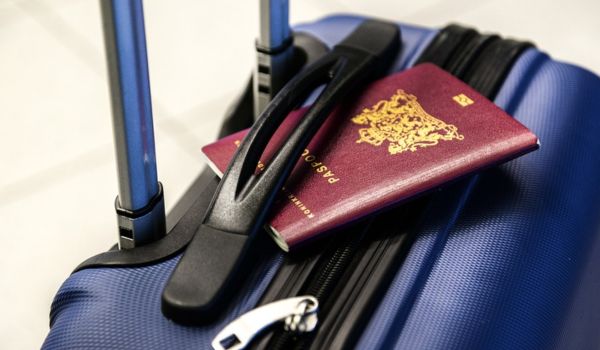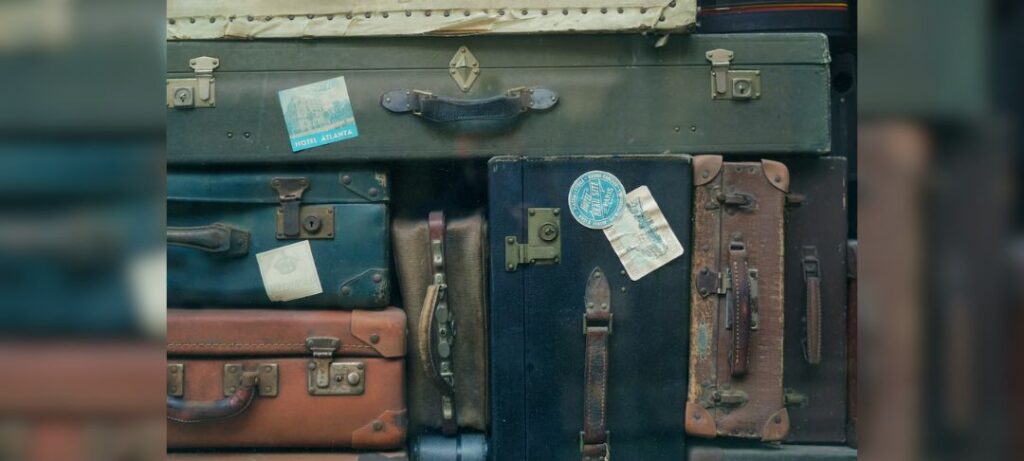Are you planning your next travel adventure and wondering what you can pack in your checked luggage? As a seasoned traveler, you know that packing for a trip can be a stressful experience. You want to make sure you have everything you need, but you also don’t want to risk having anything confiscated at the airport. In this blog post, we will answer the burning question on every traveler’s mind: “Can I Pack Off in My Checked Luggage?” We will explore the rules and regulations surrounding checked luggage, and give you tips and advice on how to pack your bags without any stress.
Understanding Checked Luggage
Checked luggage is the baggage that you hand over to the airline staff at the check-in counter, which is then transported in the cargo hold of the plane. It is important to understand the rules and restrictions regarding checked luggage to avoid any surprises at the airport.
Firstly, you need to know the size and weight restrictions for checked luggage. Most airlines allow you to check in one or two bags, with a maximum weight of 50 pounds each. Some airlines charge for checked luggage, so it is important to check your airline’s policy before you pack. Additionally, you should ensure that your luggage complies with the dimensions specified by the airline. This will prevent any additional fees or inconveniences at the airport.
Secondly, you need to know what items can be checked in. Clothes, accessories, toiletries, electronics, books, magazines, souvenirs, and gifts are generally allowed in checked luggage. However, there are certain items that are prohibited by the Transportation Security Administration (TSA) and airlines, which we will discuss in more detail later.
Lastly, you should ensure that your luggage is secure and organized. This means packing your items in a way that prevents them from shifting during transportation and using luggage locks or straps to keep your belongings safe. It is also a good idea to label your luggage with your name, address, and phone number in case it gets lost.
Items that can be Packed Off in Checked Luggage

When it comes to packing off in checked luggage, you have a lot of options. Clothes and accessories are the most common items that people pack in their checked luggage. You can pack all types of clothing, including dresses, suits, shoes, and hats. However, it is important to pack your clothes in a way that minimizes wrinkles and damage during transportation.
Toiletries and personal care items are also allowed in checked luggage. You can pack your shampoo, conditioner, soap, toothpaste, and other personal hygiene items. However, you should ensure that they are packed securely in a sealed plastic bag to prevent leakage. It is also important to note that certain hazardous materials, such as aerosol cans and flammable liquids, are not allowed in checked luggage.
Electronics and devices are other common item that travelers pack in their checked luggage. You can pack your laptops, tablets, cameras, and other electronic devices, but it is important to pack them securely in a protective case to prevent damage. You should also ensure that you have all the necessary chargers and cables packed with your devices.
Books and magazines are also allowed in checked luggage. If you are a reader, you can pack your favorite novels or magazines to enjoy during your flight. However, keep in mind that checked luggage is subject to inspection by the TSA, so it is best to avoid packing any controversial or offensive reading material.
Souvenirs and gifts are other items that people often pack in their checked luggage. If you are traveling to a new destination, you may want to bring back souvenirs for yourself or your loved ones. You can also pack gifts for family or friends in your checked luggage. However, keep in mind that certain items, such as live animals or plants, are not allowed in checked luggage, so it is important to check the regulations before packing.
Finally, it is important to pack your checked luggage in a way that makes it easy to locate and identify. This can be done by using brightly colored luggage tags or unique luggage designs. It is also important to pack your items in a way that makes them easy to access in case you need to retrieve something during your trip.
Items that Cannot be Packed Off in Checked Luggage
While there are many items that you can pack in your checked luggage, there are also items that are prohibited by the TSA and airlines. These items are considered dangerous or hazardous and are not allowed in checked luggage for safety reasons.
One of the most commonly prohibited items is flammable liquids, such as gasoline, propane, and lighter fluid. These items are highly flammable and can pose a serious risk to other passengers and the plane. Similarly, explosive materials, such as fireworks and flares, are not allowed in checked luggage.
Aerosol cans, such as hairspray and spray paint, are also prohibited in checked luggage. These items are considered hazardous because they are pressurized and can explode or leak during transportation.
Weapons and firearms are also not allowed in checked luggage, with the exception of unloaded firearms that are properly packed in a hard-sided case. This is because these items pose a serious threat to the safety of other passengers and crew members.
Certain types of chemicals, such as bleach and drain cleaner, are also prohibited in checked luggage due to their potential to cause harm. Additionally, live animals and plants are not allowed in checked luggage because they require special handling and care.
Preparing Your Checked Luggage
When it comes to preparing your checked luggage, there are a few things you can do to ensure that your items are safe and secure during transportation. Firstly, it is important to choose a durable and sturdy suitcase or bag that can withstand the handling process. Look for suitcases with hard shells or reinforced corners to minimize damage.
Once you have selected your luggage, it is important to pack your items in a way that minimizes damage. This can be done by using packing cubes or compartments to separate and organize your items. You should also wrap any fragile items, such as glassware or electronics, in bubble wrap or other protective materials.
When packing your items, it is important to consider the weight restrictions set by the airline. Exceeding these limits can result in additional fees or even having to leave items behind. To avoid this, consider packing light and only bringing the essentials for your trip.
It is also important to check the TSA and airline regulations regarding prohibited items. Make sure to remove any prohibited items from your luggage to avoid delays or confiscation at security checkpoints.
Finally, it is a good idea to label your luggage with your name, contact information, and travel itinerary in case it gets lost or misplaced. This will help airline staff locate and return your luggage to you quickly.
Checking in Your Luggage
Once you have prepared your checked luggage, the next step is to check it in at the airport. This process can vary depending on the airline, but generally involves the following steps:
- Locate the airline check-in counter or kiosk.
- Present your boarding pass and ID to the airline staff.
- Place your luggage on the scale to check its weight and size.
- Pay any additional fees for overweight or oversized luggage.
- Receive your luggage tag and boarding pass.
- Drop off your luggage at the designated location, such as a luggage conveyor or baggage drop-off area.
- Proceed through security to your departure gate.
It is important to arrive at the airport with plenty of time to spare, especially if you have a large or heavy suitcase. This will allow you to navigate the check-in process without feeling rushed or stressed.
When checking in your luggage, it is important to keep your boarding pass and ID with you at all times. This will ensure that you have the necessary documents to board your flight and retrieve your luggage at your destination.
Understanding the Luggage Handling Process
After you have checked in your luggage, it goes through a complex and carefully orchestrated handling process. This process involves several steps and personnel, each of whom is responsible for ensuring that your luggage arrives safely and on time.
The first step in the luggage handling process is loading your luggage onto the conveyor belt. This is typically done by baggage handlers, who carefully lift and load each bag onto the belt. It is important to note that baggage handlers often work in harsh weather conditions and face physical strain on the job.
Once your luggage is loaded onto the belt, it moves through a series of conveyors and scanners. These scanners are designed to detect any prohibited items or potential threats, such as explosives or weapons. If a scanner detects an issue, the luggage is typically flagged for additional inspection.
After passing through the scanners, your luggage is loaded onto the airplane. This is done by a team of ramp agents, who use specialized equipment to load and secure each bag in the cargo hold. It is important to note that cargo holds are pressurized and temperature-controlled to ensure the safety of your luggage.
Once the airplane arrives at its destination, the luggage is unloaded by a team of baggage handlers. These handlers carefully remove each bag from the cargo hold and place it onto a conveyor belt, which carries it to the baggage claim area.
Conclusion
In conclusion, packing for a trip can be stressful, but with the right information and planning, it can be a smooth and hassle-free experience. When it comes to packing off in checked luggage, it is important to understand the rules and regulations set by the TSA and airlines. By following the guidelines for size, weight, and prohibited items, you can ensure that your luggage is safe and secure during transportation. Remember to pack your items in a way that minimizes damage and makes them easy to locate, and enjoy your travel adventure with peace of mind.
